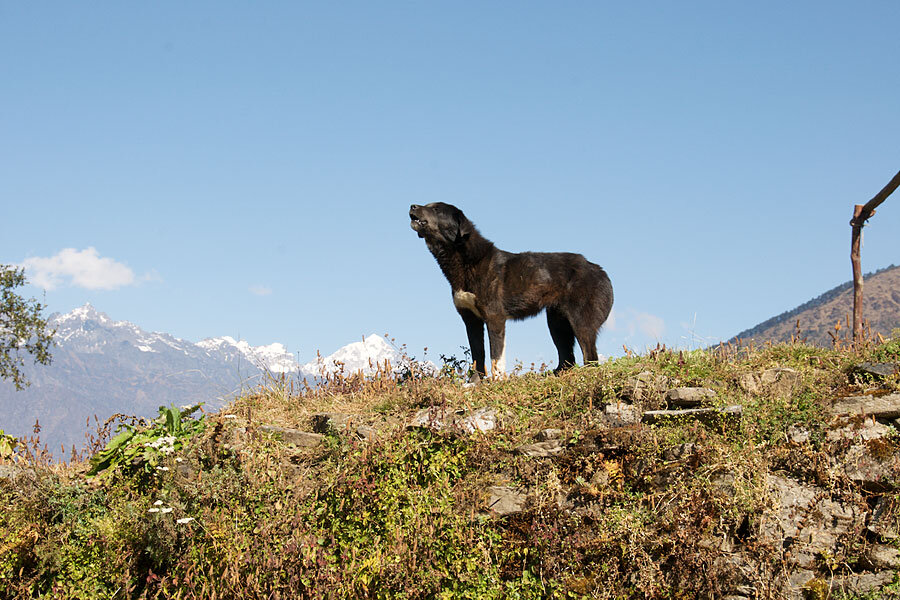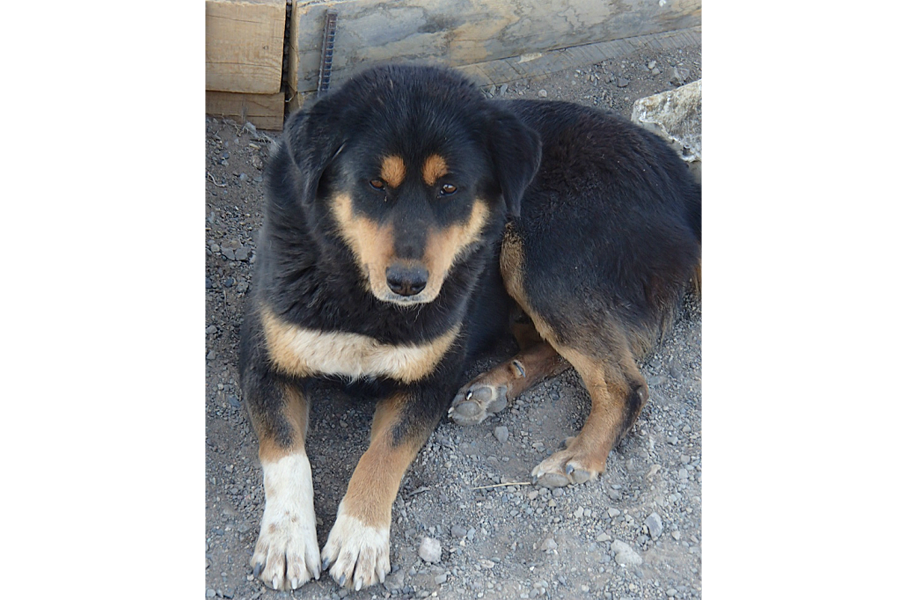Where did humans turn wolves into domesticated dogs?
Loading...
In many human households today, dogs are running partners, hunting buddies, and cuddly best friends. But it hasn’t always been that way.
Thousands of years ago, the domestic dog, Canis lupus familiaris, did not exist. But, over time, human and wolf interactions somehow produced humanity's first domesticated animal.
Scientists have been working to unravel the mysterious origins of dogs for years. Now, they may know where it all began.
Previous studies have suggested canine domestication occurred in locations such as the Middle East, Europe or southern China, the first dogs may have actually emerged in Central Asia, according to a new study out of Adam Boyko Laboratory at the Cornell University College of Veterinary Medicine.
“There’s a lot of debate about when it happened and why it happened,” says study author Adam Boyko. “I think the first thing you need to answer is where it happened,” he told The Christian Science Monitor in an interview.
“Narrowing it down to where is the first step in coming up with a comprehensive theory of what was going on,” says Dr. Boyko. And Central Asia seems to be the spot.
The paper, published Monday in the journal Proceedings of the National Academy of Science, focuses on village dogs, populations of dogs that live around human communities but not in people’s homes. Boyko describes these canines as “semi-feral street dogs.” They are generally found in rural areas today.
With nobody controlling the pooches’ breeding, the genetic patterns in these modern populations most closely resemble natural historic populations. From these village dogs, the researchers can better identify wolf ancestry.
The scientists sampled DNA from populations of village dogs across the globe. They compared markers in these dogs’ genomes to hone in on the clearest descendants of the original domesticated dogs. Populations in rural Central Asia, especially in countries like Nepal and Mongolia, arose as those special hounds.
Not the only region in the spotlight
Scientists have pointed to other regions for canine domestication too.
Peter Savolainen, an associate professor of evolutionary genetics at the Royal Institute of Technology (KTH) in Stockholm, Sweden has done extensive research that points to Southeast Asia, specifically Southern China, as the setting for dog domestication instead.
Dr. Savolainen points out that this new paper does not include samples from Southern China. “If they don’t believe it is South China, then they should, in their own research, try to disprove it,” he told The Christian Science Monitor in an interview.
Boyko agreed that more samples from more places will be necessary to narrow down a location, but, he says, “We had dozens of samples from North Vietnam, within kilometers of the Chinese border.”
“Unless there’s a huge barrier to gene-flow between China and Vietnam, which I don’t see any evidence to suggest that there would be, I’m pretty convinced that the diversity signatures we’re seeing are implicating a more western origin,” Boyko explains.
Still, both researchers are pleased that their results are nearby each other.
“To me that’s reassuring, that we’re honing in on similar areas,” Boyko says.
Savolainen agrees, “It’s obviously some kind of a consensus now in our two studies,” with the focus on Asia.
Both researchers are planning further work to narrow down that wide field and hope to incorporate archeological research as well.
Chasing the tale of domestication
Dogs were the first human domesticated animals, but humans may not have intentionally made these furry friends.
A prominent hypothesis is that the wolves themselves wandered into human camps to scavenge from scrap piles. In this scenario, it was the wolves who carried genes to be less afraid of humans that had an evolutionary advantage. Over time, a wolf population grew that was tamer and more comfortable co-existing with humans.
Perhaps people saw these animals as useful companions when they wandered in and domestication became more of a mutual process, but scientists aren’t sure when, why or how it all happened.
What the true story is, “Nobody knows, because it’s impossible to know exactly what happened in that time,” says Savolainen.
But finding where this first domestication event played out could lead researchers to archeological or other clues about those early dog populations and the humans they befriended.
Why Fido’s ancestors matter to humans
“I think it tells us something about the story of people,” says Boyko. As the first domesticated animal, the history of dogs is linked with our own background.
Savolainen explains, “The history of dogs is very closely related to the history of humans. They were our first domestic animals and they follow us everywhere in the world, to every continent.”
“It’s a way at looking at human history,” he says of studying canine domestication. “You can also follow human migrations by following the dogs.”
Simply put, “it’s history” that makes dogs’ story significant, says Savolainen. “So if you think history is important, then it’s important,” he says. “Otherwise, it’s not.”









